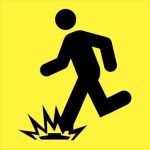So you want to start to train, but you don’t know where to start? Maybe you’re already training but you’re not sure if it’s how you should be the training? When it comes to training and exercise, what works and what doesn’t? How do you know if you’re doing the right thing or the wrong thing?
 Training and exercise, in general, is a bit of a land mine. Don’t get me wrong, doing any sort of exercise is better than doing none. However, the unfortunate problem about most people who are training and doing exercise is that they are doing so at less than optimal levels. If you have a specific goal in mind and you want to try to achieve that goal in a timely fashion then it’s a good idea to know some of the training principles that will help you get there.
Training and exercise, in general, is a bit of a land mine. Don’t get me wrong, doing any sort of exercise is better than doing none. However, the unfortunate problem about most people who are training and doing exercise is that they are doing so at less than optimal levels. If you have a specific goal in mind and you want to try to achieve that goal in a timely fashion then it’s a good idea to know some of the training principles that will help you get there.
In this post I will present my perspective on some of the current ideas and principles of training and exercise based upon popular opinion and up-to-date scientific research. I also aim to present the ideas and principles in a way that helps simplify them so that they become both easily understood and easily employed. I hope that by understanding and employing some of these principles, you can begin to approach a level of results closer to what you desire. To potentially create or modify a training program so that it gets you closer to, the virtually mythical, 100% of your training potential and so ultimately closer to your goals.
[edit]What begun as a multi-principled post with planned future “parts” is now going to be more like a series. Each post in the series basically tackling one of the principles which I believe in when it comes to training in general (not specific to climbing).
Before we being talking about the what we should training, let’s talk about some of the ideas behind how we should train.
How should we train?
Clearly, the most basic principle underlining all of training and exercise is that of progressive overload. Progressive overload is exactly as it sounds. We must overload the body, over time (progressive), so that it will adapt to the stressors (the training and exercises) under which we place it. Through this adaptation the body will grow and develop, burn fat, build muscle, gain flexibility, etc. Even though it is probably more related to strength or weight training, I believe the principle underlines all training and exercise.
Rest and Recovery.
However, even though progressive overload is perhaps the most basic principle underlining training and exercise, the first principle I wish to present is perhaps both the most important principle and most over-looked factor with respect to how we train. That principle is rest and recovery, especially as you age (an important consideration for me). Adequate rest and time for recovery is paramount. Without adequate rest and recovery time the body simply cannot develop and adapt to the progressive overload under which we have placed it. Finding the balance between the times and amounts you train and the times and amounts you rest is not easy. It’s certainly easy to know when you have pushed too hard; being tired, being sore, performing at significantly less than maximal effort all are indicative of overdoing it. But, figuring out when you’ve ideally hit that “my body will get stronger” limit of training hard but not the over-doing it “I am now injured” feeling, that’s far more difficult.
There’s no secret trick here, the key is to try to begin to listen to your body, try to begin to gauge when you feel close to over-doing it. And if you err, err on the side of cation. You’re going to have a greater benefit to risk return if you err on the side of caution, especially in the long run. Hopefully, by following the other principles in this and future post you will know how to work-out effectively so that gauging when you should rest should come a lot easier.
Minimum effective dose.
Because the principle of rest and recovery goes perfectly hand-in-hand with the principle of “minimum effective dose”, I’ll quickly  mention it now. When training and exercising, the benefit from the work-out is comparable and proportional with the input into the work-out. Sounds logical right? You train and exercise a certain amount you get a certain amount of benefit from that training. However, current ideas and research in training is showing that, after a certain point, after a certain amount of training and exercise, the benefit from training drops significantly compared to the increased input. What does this mean? It simply means, the more you train does not necessarily mean you get more benefit out of it.
mention it now. When training and exercising, the benefit from the work-out is comparable and proportional with the input into the work-out. Sounds logical right? You train and exercise a certain amount you get a certain amount of benefit from that training. However, current ideas and research in training is showing that, after a certain point, after a certain amount of training and exercise, the benefit from training drops significantly compared to the increased input. What does this mean? It simply means, the more you train does not necessarily mean you get more benefit out of it.
Bottom line, don’t over-train.





